


The International Awards Committee and Solid Waste Association of North America (SWANA) Board of Directors unanimously voted to honor Tom Conrad, the “C” in SCS, with the Robert L. Lawrence Distinguished Service Award at WASTECON 2021 in November. The Lawrence award is the highest accolade SWANA bestows on a member of the waste management industry, reserved for those making meaningful and lasting contributions.
“I’m honored and humbled to be selected for the Robert L. Lawrence Award. I thank you and am especially thankful for what SWANA and SCS are today,” stated Tom Conrad.
SWANA recognizes Conrad for over 60 years of significant influence on the waste management and environmental services industry. Conrad, a Founder, Executive Vice President, and Director Emeritus of SCS Engineers, dedicated his career to advancing solid waste management, most notably through the founding of SCS Engineers (Stearns, Conrad, and Schmidt Consulting Engineers) more than 51 years ago.
Tom Conrad worked on a wide range of environmental engineering projects touching almost every aspect of solid waste management throughout his career. As an environmental engineering firm and consultant to the newly created US Environment Protection Agency (EPA), the founders recognized that responsible solid waste management was increasingly important for protecting the environment and the health and safety of the general public.
Leading SCS, he helped the EPA develop the first federal regulations for sanitary landfills, managing and capturing landfill gas, waste sorting protocols, sludge management, and land remediation.
Environmental services, including wastewater management, were always a significant part of SCS services and the waste industry. When new regulatory policies began expanding in the ’80s, SCS’s techniques, technology, and expertise helped a broad range of industries comply with environmental needs and continues today with the firm’s greenhouse gas, landfill technology, renewable energy, remediation, and sustainable materials management programs.
Conrad is also known for hiring and mentoring today’s SCS leaders, many of whom are SWANA leaders, by creating and fostering SCS’s culture encouraging employee participation in industry associations, community, and SCS’s mentorship and leadership programs.
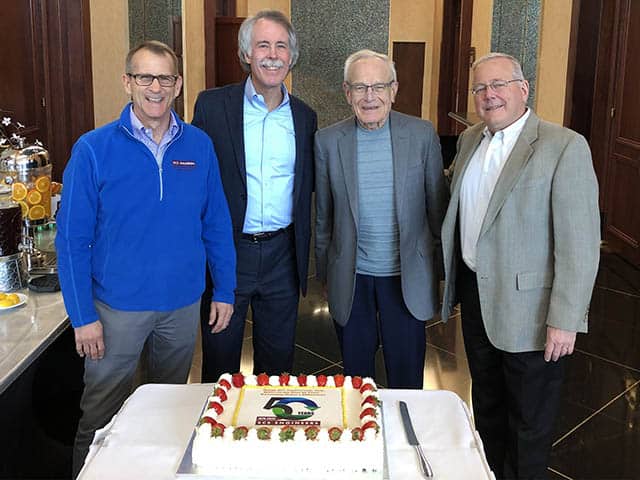
Before his retirement in 2016, Conrad held professional engineering licenses in 24 states. He was a member of SWANA, the American Society of Civil Engineers, the National Waste and Recycling Association, and the Society of American Military Engineers.
He maintains his “work hard – play hard” lifestyle. He is active at SCS, participating in Board of Director meetings and speaking at the Young Professionals Group events and celebrations. While no longer mountain climbing and biking cross-country, he has a vigorous walking, swimming, and biking schedule.
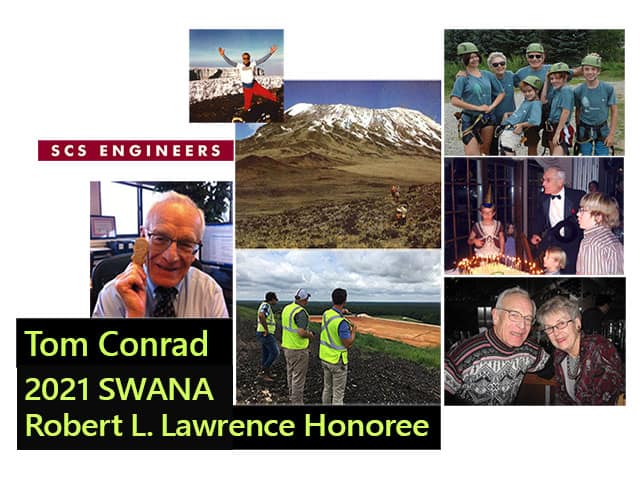

Popular Mechanics recently published an article entitled The Pungent History of America’s Garbage Mountains. The article starts with a little-known ferryman on Lake Michigan when a storm beached his craft on an offshore sandbar in July 1886. Thus started Chicago’s open dump on today’s Lake Shore Drive, home to landmarks such as the Museum of Contemporary Art, the Wrigley Building, the Chicago Tribune Tower, Northwestern University, and the Magnificent Mile – all on turn-of-the-century garbage.
Transportation centers, stadiums, and even entire neighborhoods are now built on landfills. This is a fascinating, well-written article on the history and possibilities of building on remediated properties and brownfields.
“Landfill redevelopment projects tend to be real estate projects, and you know what matters in real estate: location, location, location,” says Mike McLaughlin of SCS Engineers, who specializes in brownfields and landfill redevelopment. “A landfill in an urban area might be the only piece of open land in that area. People go to extraordinary lengths to redevelop because the property is so valuable.”
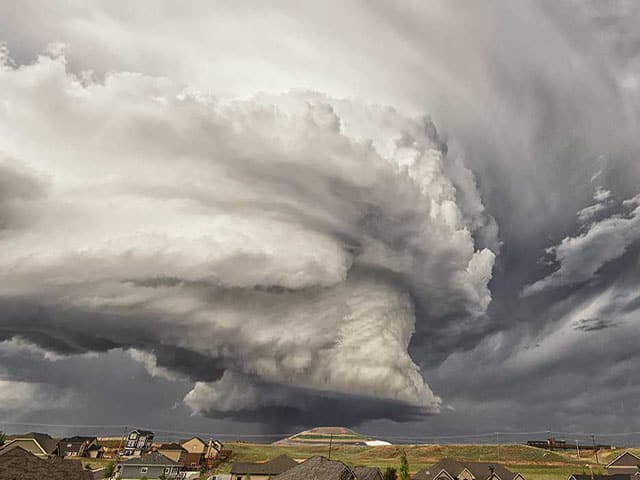
With the frequency and severity of storms on the rise, municipal solid waste landfill operators have to think differently to keep their workers and environment safe. Planning is key to safely hit the ground running in the wake of severe weather.
Federal law does not hold household hazardous waste (HHW) to the same standards as what is classified as hazardous waste (generated by businesses and received at subtitle C landfills). Yet, these materials have the same compounds and are potentially dangerous too.
“Subtitle D landfills routinely receive these wastes, but under normal conditions, it’s in much smaller quantities, and they are typically segregated. So managing them is not a big deal. But, after a storm, operators can be inundated with these oxidizers, corrosives, flammable gases, and flammable solids. It’s all coming in at once and mixed with other storm debris, posing a risk for reactions and workers’ safety,” says Mike Knox, SCS Quality Advisor. He supports landfill operators in safely managing hazardous wastes. Storm season is a busy time for him and his clients. Those unprepared find themselves pulled in multiple directions and need to act quickly and smartly.
If a structure blows down, it may generate waste that contains gallons of dangerous liquid, gas containers, propane tanks, and pesticides mixed in. It’s dangerous, especially if a waste worker does not see it.
Mike’s Planning Advice
Operators set themselves up for success when they’re ready to go with a plan before that first 80-mile-an-hour wind gust hits.
“You must know how to identify hazardous wastes ahead, train staff ahead, and look at worse-case scenarios ahead,” Knox says.
He and his team start by looking at operators’ facilities and identifying materials, workers’ roles, and available equipment and assets. They identify safety areas and set up classrooms. Important are preparing the staging areas to manage the influx, screen, and segregate by waste type.
Then they look at government rules; help operators determine what they need to do; and execute a plan.
Minimizing Risk
Operators need to secure waste, make sure it’s packaged right, and minimize it where possible to stave off mishaps.
The safety of people and equipment is part of a proactive strategy. Trucks can tip over with heavy, wet loads, so do not overload them. Space trucks in the tipping area are at least 10 feet further apart than the dump trailer is long. For a 30-foot trailer, that’s 40 feet.
Setting up this extra space can be difficult unless you’ve established a large tipping area, and don’t take chances with dump trailers; the results have proven deadly in the past, Knox advises.
Check that backup alarms and strobe lights are working. Train equipment operators to look for vehicles and pedestrians. Do not allow cell phones at the working face; a distraction that no one needs. Mandate the use of high-visibility vests and restrict people to stay within five feet of their vehicle. Strictly control scavenging. People cannot wander and pull items from the trash.
Fuel Up
Fuel is the item most often overlooked in Knox’s experience.
“Having enough fuel to operate heavy landfill equipment and hauling fleets is essential to keep waste moving. Severe storms have impacted fuel supplies for several days to a week or more, so stock up,” he recommends. Mike typically arranges for temporary fuel storage tanks so haulers and heavy equipment operators can stay on their mark through and after the storm.
Scenarios in Preparation
Part of safety management is asking “what if” and then answering ahead of a problem. Depending on where ‘what if’ leads, you prioritize and go after the big things first. One big one is, what if floods occur? That question leads to more specifics to plan for, such as roads likely to be impacted and establishing alternate routes available. What other actions will help traffic flow?
Remember: if there’s a lot of rain or clay, trucks can slip going up hills. So alternate tipping areas that are lower and flatter may be needed to accommodate inclement weather access. “And that takes preparation. Sometimes you have to build a road to reroute to an area you are not using. It can take days,” Knox says.
Building wet weather access roads are important, as are measures like cleaning out stormwater ditches. Nevertheless, know that, depending on location, rising water may flood out areas despite these efforts. Pumping water into berms and ponds from flooded ditches can be a temporary solution if your plan and local regulations allow it. Coordinate with regulatory and permit agencies to set up such actions.
You will want to bolster protections of maintenance facilities, the scale house, and other structures that could be damaged or lose power – stock up on tarps, lumber, and power generators.
Many operators find waste screening towers to be especially useful. Knox and his team will build them in advance to prepare for what’s coming. Waste screeners at the gate radio to active face supervisors if hazardous materials are arriving so they can properly place them, ensuring they are covered with dirt before sending staff to the active face.
Knox completes quality evaluations guided by a 200-item checklist to ensure proper procedures are in place. He compliments this list with many questions to prepare.
Know Your Jurisdiction’s Rules and Storm Accommodations
Operators check local permit conditions to take advantage of possible modifications they may make. Some jurisdictions have more lenient weight restrictions for hauling vehicles or the option to set up temporary staging areas.
Knox also suggests coordinating with the local permit and regulatory agencies following the storm to take advantage of emergency relief funds and coordinate across the area’s public and emergency services.
Local government, emergency responders, regulatory and permitting agencies often have Emergency Operations Centers (EOC) to coordinate resources, information, and crisis management. Mayors, County Commissioners, fire departments, hospitals, police, environmental regulatory agencies, and other key industry leaders are typically part of this team.
These groups practice response coordination and stage tabletop exercises or mock disasters. “Take time to participate and plan with the EOC. Check for whatever else may be available in your area to help prepare, and work as a team with these local entities to respond to severe weather or other emergency events,” Knox says.
Circling Back to Planning
“Knowing what to do before the storm hits will make your recovery easier. You will keep your employees, your community, and your site safe. And be ready to go back to normal operations much faster.”
 About the Author: Mike Knox has over 30 years of Ordnance and Hazardous Materials experience. He is a Regional OM&M Compliance Manager with extensive supervisory abilities in hazardous waste emergency response and large-scale clearance operations.
About the Author: Mike Knox has over 30 years of Ordnance and Hazardous Materials experience. He is a Regional OM&M Compliance Manager with extensive supervisory abilities in hazardous waste emergency response and large-scale clearance operations.

The recent MWEA Conference covered a wealth of other important topics on water management and safety, including this presentation with SCS Engineer’s Remote Monitoring Control specialist, Brett Heist. Brett and Jarod Stuyvesant co-presented “More Than a Pretty Map – GIS Covers Your Assets,” including demonstrations of how the City of Zeeland is using GIS to enhance the efficiency of maintenance and inspection activities and improve the reliability of physical infrastructure throughout its community, leading to increased public safety and financial savings.
Click here to view these demos!
DEMOS: There are some unique methods to plan for capital improvements and streamline data storage and access being implemented in the City of Zeeland. The City has an integrated GIS map for its storm, sanitary, water, and streets, including information about each asset within the system: material, size, inverts, condition, business risk, and even televised inspection videos for some of the storm and sanitary lines.
The GIS maps’s information is used daily by public works and to create a comprehensive capital improvement map that the City uses to plan for 5-year improvements, significantly improving planning and budgeting efficiency while ultimately providing the public with safer infrastructure.
Features include televised inspection videos attached to a respective asset after uploading and accessible with the click of a mouse. Access entire buildings in the same manner as horizontal assets using a 3D online viewer.
The Zeeland Clean Water Plant RAS Building: Using AutoCAD data, the City created a 3D GIS viewer of this building and its assets. Asset information, such as blower and pump sizes and operation and maintenance tasks, are accessible without having to sort through shop drawings and as-builts.
Another example of implementing 3D GIS data like this is for MobileGR who uses a 3D GIS model to store asset data and maintenance tasks for every one of their nine parking ramps in downtown Grand Rapids.

EREF, the Ohio EPA, and industry leaders will discuss the latest science, factors, and best practices around landfill instability. This session will include managing liquids and leachate and the practice of aqueous waste disposal in landfills.
The Summit will take place at the Marriott Columbus University Area in Columbus, Ohio, on September 1, 2021. As with many EREF events, this will likely fill to capacity quickly.
SCS Engineers President and CEO Jim Walsh will moderate the Elevated Temperature Landfills session. This informative session will include mechanisms contributing to elevated temperatures, modeling to predict and control those conditions, and monitoring and management. Mr. Walsh is well-regarded for his expertise with ETLF conditions. His firm, SCS Engineers, produces the technology used to monitor and manage over one-third of the landfills in the U.S., alerting operators of landfill conditions 24/7 in real-time.
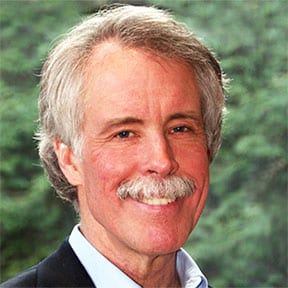
About Jim Walsh: He is one of SCS’s National Experts on Elevated Temperature Landfills working at the forefront of sustainable solid waste management, sanitary landfills, and landfill gas (LFG) for more than 40 years. Mr. Walsh earned recognition as the Principal Investigator or Chief Engineer on over thirty dedicated landfill fire and elevated temperature landfill projects. He regularly guides landfill operators and the solid waste industry on how to avoid landfill fires. He has investigated landfill fires in-situ and developed management and mitigation programs to address landfill fires and related events when they do occur. He served on the Ohio EPA Committee to address landfill fires and elevated temperature landfills in the state and assisted in developing the Ohio EPA Guidance Document on the subject.
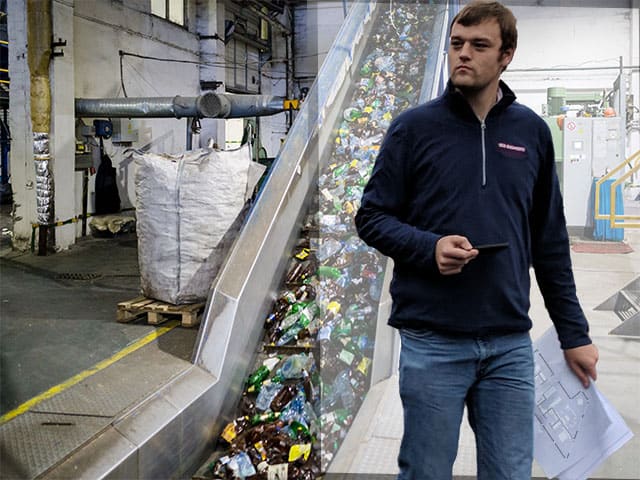
The engineer in Ryan Duckett tends to want to build the biggest, most top-of-the-line waste and recycling facilities whenever he can, but always what is practical for his clients. SCS’s mission states that employees adopt our clients’ environmental challenges as our own, and that includes their budgets and social goals as well.
“I appreciate that the waste management enterprises I work with are businesses and care about more than the engineering of a project. They care about the economics, and they look for guidance in both realms to get maximum value and efficiency,” says Duckett, who came to SCS Engineers as a new environmental engineering graduate. Then he went back to school for his MBA. He wanted to join both the technical and financial puzzle pieces.
“Everyone, especially local governments, is constrained by tight budgets. You have to think about the interplay between design and construction and financial feasibility,” he says.
That’s his job – to plan technically sound programs and facilities, whether new builds, upgrades, or changes in operations or services. Or it can be developing protocols for clients to tap into low-carbon fuel credits.
He’s learned to look through both developers’ and operators’ eyes to help clients accomplish what they want at budget levels they set while maximizing what they get from their programs, facilities, and systems.
“You need to make assessments and quantify details to answer questions like, what would an operator have to charge for a given service to break even? Is this service fee reasonable given market conditions? What are estimated operational costs and capital costs for an expansion? Financial analysts vet these questions, but very few of them are intimately involved in solid waste practices or engineering,” Duckett says.
A holistic approach in play
He calls the work he does integrated solid waste management, which involves understanding the entire operation and how one component affects the other, whether routing and collections, materials recovery facilities (MRFs), transfer stations, landfill gas systems, or others.
Duckett shows this holistic approach in play by explaining how grasping the way collections work helps design transfer stations. These major builds can run up to multimillions, even when project managers have the skill set and foresight to plan for efficiency and sustainability.
“You can better estimate how to design queuing space, how to design surge capacity, how to size facilities,” he explains.
“Adding, for example, an extra day’s storage capacity at a transfer station or MRF provides extra flexibility in the event of a disruption farther down the line. In an emergency, owners could potentially save significantly by having more time to identify or negotiate more economical alternatives.”
Some of the solutions he finds are simple but require thinking out of the box—literally in one situation where cardboard boxes were stockpiling at a convenience center because they didn’t fit through the slot in a single-stream receptacle. Simply creating an acceptance area only for boxes diverts multiple truckloads a week from landfills and generates thousands a year in revenue.
Then there are the major construction projects where Duckett digs deeper, such as one plan to site, design, and build a MRF. He conducted a feasibility study looking at different sites and calculated estimated operational costs and upfront capital costs for each identified site.
“We ultimately determined that by co-locating a facility at the existing landfill, the client would save over $200,000 in operating costs, with savings from scales/scale house reuse, the reduced distance of residual stream hauling, labor efficiencies, and other areas.”
In this same scenario, adding robotics for additional processing comes with anticipated savings of about $300,000 in manual sorting costs annually.
When do you recommend spending more upfront?
This question often comes up in Duckett’s world.
He finds that sometimes spending more upfront and on what’s built to last translates to substantial savings in the long run. He reflects on when a client had to replace a transfer station floor every couple of years.
“These floors take so much impact, so this is not an uncommon problem. But you can provide a huge ROI by reducing floor replacement frequency. They can run over half a million to replace properly, even for relatively small facilities,” Duckett says.
He ran budget numbers for different approaches and found in this scenario the higher-end approach, cement with additives such as fly ash, was the better deal.
“It might cost 50 percent more upfront, but the floor could last three times as long, breaking the cycle of frequent, costly replacement,” he says.
What do you recommend when budgets are so tight, there’s no cash reserve to invest?
Duckett and his team have found solutions in this scenario, too; often, the strategy is to figure out if a phased approach is possible.
“You could spend ten years waiting to generate enough funds to build infrastructure for a major project. Your citizens are missing out, so sometimes it’s best to build smaller, as soon as you need it. Then increase capacity as you can afford it.”
Expert advice from his colleagues
A very positive thing about his holistic approach is that Duckett can reach out to his colleagues who specialize in long-term financial management plans for utilities such as solid waste. This team, led by Vita Quinn, specializes in helping clients build sustainable financing models and plans.
The models help communities manage financial impacts such as COVID disruptions; make investments without burdening community budgets, and help take advantage of commodity market swings such as in the value of recycled paper. Models are useful to show community leaders and citizens the different options and what-if scenarios that make sense based on current and future conditions.
Going back to the drawing board to improve a system
Not long ago, Duckett’s team had to figure out what to do about a decal-based, pay-as-you-throw system that wasn’t working. The operator’s initial plan seemed logical and simple: residents purchase decals and place them on their bins for pick up. But some of them let their subscriptions expire. The city was losing money servicing outstanding accounts. It hired enforcement officers to check every decal for validity, which soon proved too labor-intensive.
“We found an alternative: adding fees for trash and recycling to the water and sewer bill. It’s bringing in more revenue. And the city is saving on hours spent checking thousands of decals, freeing the enforcement officers for other jobs, like bulky and yard waste enforcement,” Duckett says.
Duckett’s greatest lessons learned?
“In my seven years on the job, I have learned that the solid waste industry is complicated with a lot of intricate, moving parts that interconnect. Who would have thought trash was so complex?”
He’s also learned it’s critical to have comprehensive teams with diverse backgrounds to gather different perspectives.
“It goes back to the concept that you need more than engineering expertise to deliver that value add. That value add is important to our customers, so we strive to understand the business challenge along with the technical and social goals.”
Speaking as a young professional to other young professionals and students thinking about careers in waste management, he says: Check it out. Give it serious thought.
“I do not know of another industry that involves so many interesting disciplines: biology, hydrology, geology, engineering … even data and computer scientists.”
He shares this proposition for the young and ambitious:
“As technology advances and regulatory requirements heighten, our teams learn a lot on the job. But we appreciate our sharp graduates who bring the latest knowledge from academic settings. We depend on them to share new ways of thinking and help us solve challenging and intriguing problems.”
His motivation to get into environmental engineering evolved from his passion for the outdoors.
“I grew to appreciate conservation, which centers on doing more with less to preserve resources. Nothing is wasted in nature; everything is cyclical and gets used,” Duckett says.
“That’s what our waste system could emulate, and as a nation, we’re moving in that direction. It’s not just about reducing trash. It’s about reducing wasted effort and money spent beyond what’s necessary. It goes back to the idea of efficiency and getting the most out of something – instead of a using-disposing-buying new mentality.”
Learn more about comprehensive MRF and Transfer Station infrastructure

Media Borough, Pennsylvania’s Food Compost Program uses a witty video encouraging participation in its organic waste diversion and composting program. We had to share – not only is it fun – it works!
The Borough launched its pilot program to gauge the feasibility of adding food scrap collection to its current recycling efforts. This month the program is available to all residents. The food scrap collection program provides residents the opportunity to separate food from the rest of their household waste for collection and composting at a local compost farm.
Media Borough estimates it has 70% recycling participation in the community – that’s an impressive number. Its current recycling and yard waste programs divert close to 30% of residential solid waste from landfills and incinerators. Adding a food scrap collection program can reduce residential waste by another 30% and create compost.
The Borough’s Public Works website explains the reasons why organic matter, matters.
Thank you to this Pennsylvania community and its Public Works department for helping to sustain future generations with their reduce, reuse, and recycling actions. We hope by sharing their video and results, we’ll see greater participation in communities nationwide.
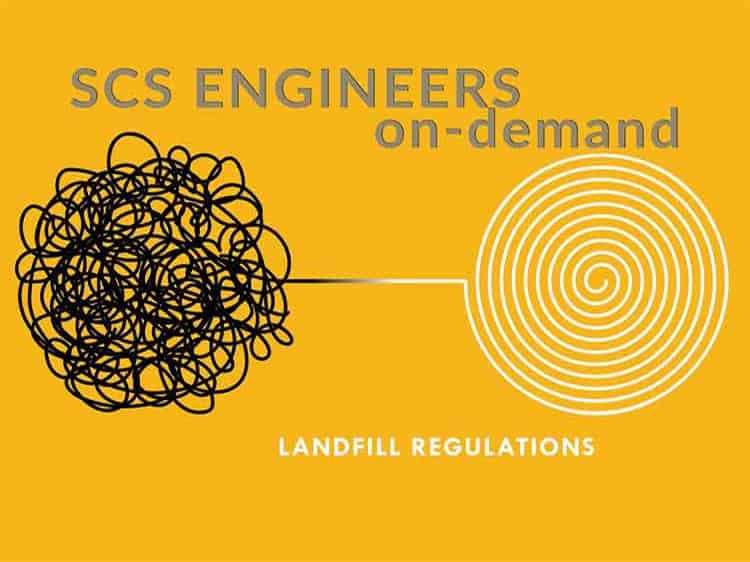
The EPA and, in some cases, states are rolling out new emissions guidelines at least as stringent. The EPA estimates that the plans could cover about 1,600 landfills. These landfills are in 41 states, tribal entities, and the U.S. territories of Puerto Rico and the Virgin Islands.
MSW landfills without Gas Collection and Control Systems (GCCS) that reach a specific threshold will need to add these systems and have 30 months to install or update control systems to meet new standards. As you’ve noticed by now, we’ve greatly oversimplified what is happening.
The new regulations and timetables are difficult to understand and untangle. SCS Engineers, in concert with SCS Field Services, have prepared resources to help during the transition period and afterward when landfills are likely to need more monitoring and measurement, thus creating millions of more bits of data to store, analyze, and report.
We hope you find these resources useful. We will be publishing more soon.
These resources may help you with future monitoring and maintenance:
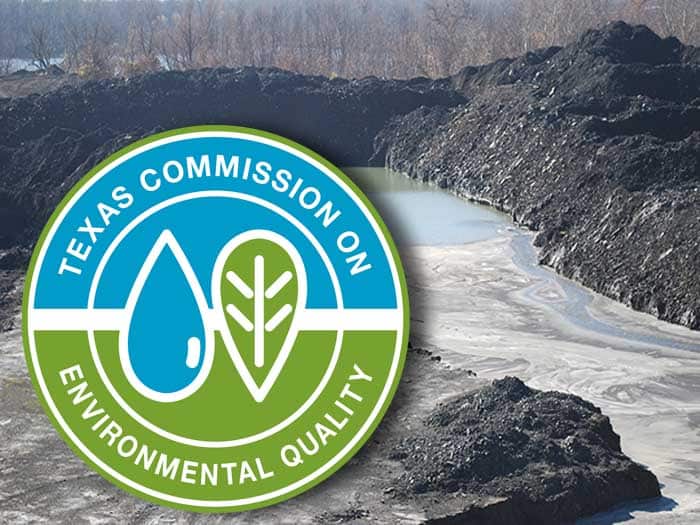
SCS periodically prepares Technical Bulletins to highlight items of interest to our clients and friends. We publish these on our website.
Our most recent Bulletin summarizes and updates the TCEQ’S New Rules Implementing Compliance and Registration Requirements for Coal Combustion Residuals (CCR) Management. In addition, this Bulletin covers TCEQ’s development of a program for implementing the Federal rules governing CCR facilities in Texas. While TCEQ’s CCR program needs to be as protective as the federal CCR rules, there are important distinctions in Chapter 352.
SCS’ Texas-based professionals are experts on TCEQ’s new program for registering coal combustion residue (CCR) sites. We are currently working to support multiple sites needing to meet the application deadline. Our engineers and geologists know how to use site-specific design and related technical documents to complete TCEQ’s detailed application for a registration consistent with TCEQ’s new regulatory program.
For additional information on the updated regulations, deadlines, and compliance requirements, contact:
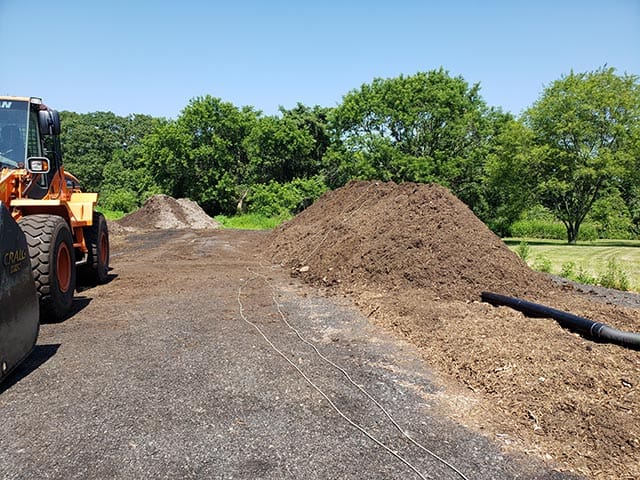
With support from the Town of Stonington, the Southeastern Connecticut Regional Resources Recovery Authority (SCRRRA) began a four-month food waste composting demonstration project at the Stonington Town Transfer Station on June 30, 2021. The environmental consulting and contracting firm SCS Engineers is supporting the project.
SCRRRA currently manages approximately 135,000 tons of garbage for its 12 member municipalities (East Lyme, Griswold, Groton, Ledyard, Montville, Preston, New London, Norwich, North Stonington, Sprague, Stonington, and Waterford). About one-quarter of the volume of garbage, or 33,750 tons, is organic waste.
The development of an organics facility could convert organic waste into a valuable organic soil amendment. The demonstration project is an integral part of a larger study that SCRRRA has undertaken to determine the feasibility of developing a commercial-scale food waste composting facility in Southeastern Connecticut.
Pilot projects such as this allow the region to quickly gather information about the collection and sources of organic materials, then test and refine a high-quality compost mix. The project also provides hands-on experience and can help spark innovative waste management practices.
Compost is produced using a mix of feedstocks, raw organic materials, such as leaves, wood, and food scraps. The composting process in the SCRRRA demonstration project uses wood mulch produced by SCRRRA at the Stonington Transfer Station and food waste supplied by two Connecticut companies Blue Earth Composting of Hartford and Willimantic Waste of Willimantic.
Communities across the U.S. report success diverting organic waste from landfills and producing a viable commodity with significant benefits, as the U.S. Composting Council describes in its Factsheet. For more information and outcomes from the SCRRRA project, contact SCRRRA Executive Director David Aldridge.